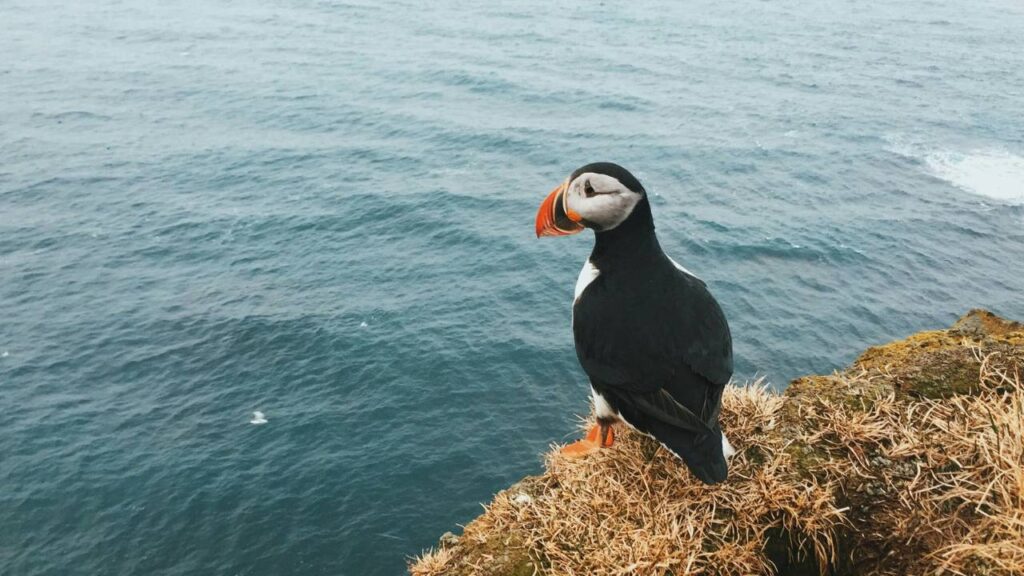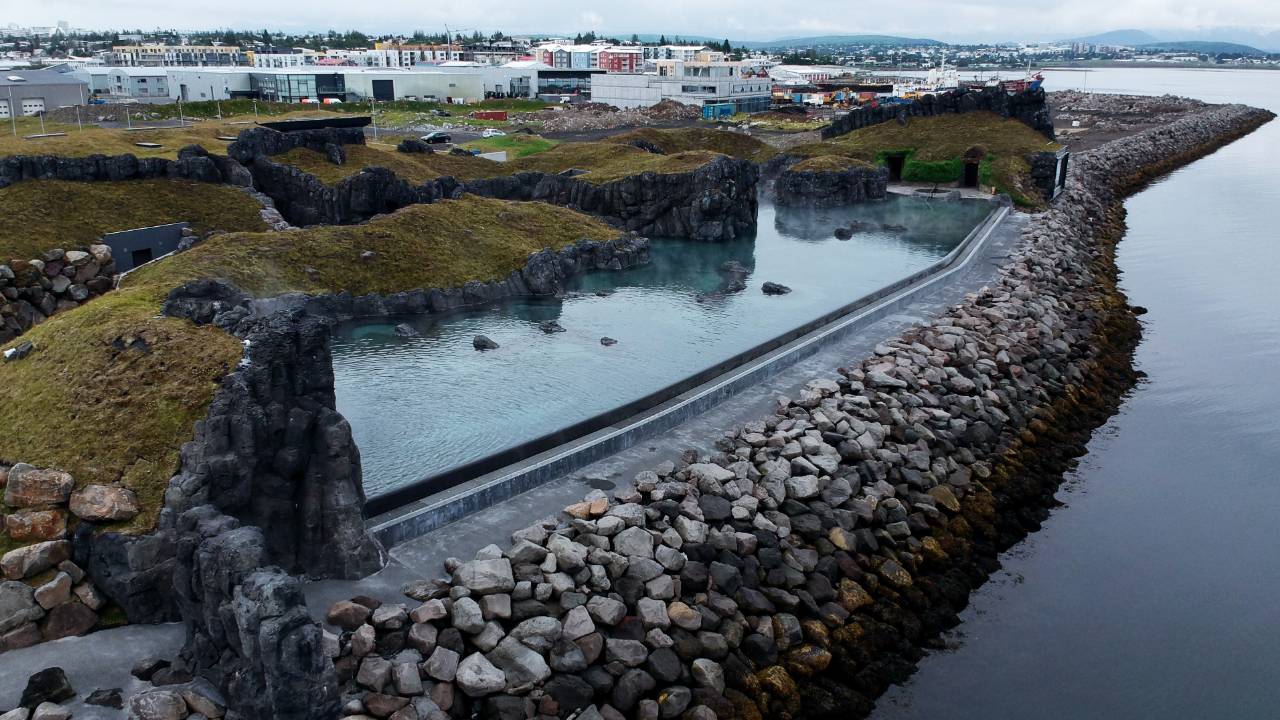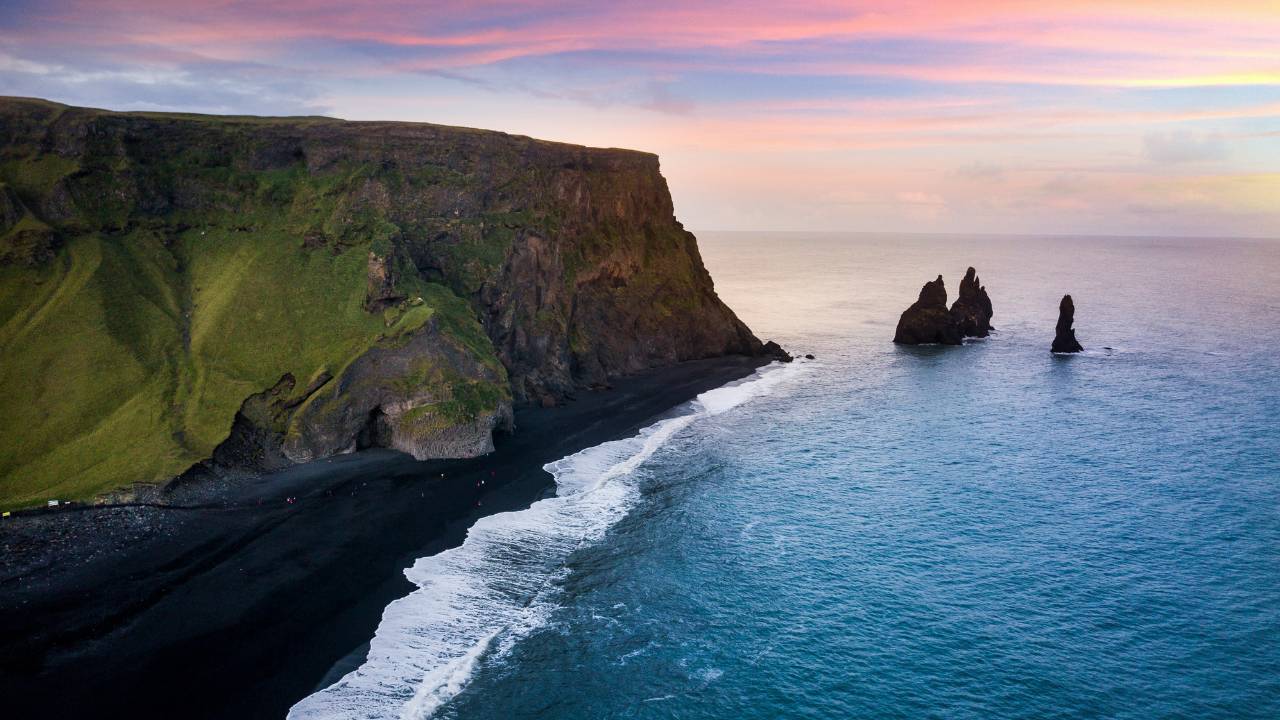Iceland offers a unique opportunity to observe one of nature’s most charming seabirds: the puffin. Known for their colourful beaks and curious mannerisms, puffins have become a symbol of Icelandic wildlife. With Iceland being home to some of the largest puffin colonies in the world, you’re in for a real treat. Puffin watching is an activity that brings you face-to-face with these friendly birds in their natural habitat, offering an unforgettable experience.
Your puffin watching tour might take you to the rocky cliff sides or to the grassy isles where these birds burrow and nest. From May to early August, these are the best times to catch a glimpse of puffins as they come ashore to breed. The tours are typically led by experienced guides who share insightful knowledge about puffin behaviour, enhancing your understanding and appreciation of these remarkable birds.
When attending a puffin tour, it’s important to respect the birds and their nesting sites. The guides will ensure your safety and the puffins’ well-being, allowing for a sustainable and enriching experience. Whether you’re a seasoned birdwatcher or simply looking for a unique encounter with nature, puffin watching in Iceland is sure to leave a lasting impression.
Planning Your Puffin Watching Adventure
Embarking on a puffin watching journey in Iceland requires strategic planning to optimise your experience. Knowing when to visit, choosing the best tour, and packing suitably are essential steps.
Best Time to Visit
The ideal period for puffin spotting in Iceland is during the summer season, specifically from late April to early August. This is when puffins breed and are most active on land. Spring, while scenic, may be premature for puffin encounters as they are yet to establish their colonies. Below is the best time to observe puffins in key locations:
| Location | Best Viewing Dates |
| Westman Islands | Late April – Early August |
| Reykjavík | May – July |
Make it a point to check availability of ferries and tours in advance, as these dates are popular among wildlife enthusiasts.
Choosing the Right Tour
Reykjavík and the Westman Islands are prime puffin watching hotspots. To secure your spot:
- Research puffin watching tours that fit your schedule.
- Compare offers for the best value.
- Read reviews from past participants.
- Look for small-group tours for a more intimate experience.
Consider the mode of travel; a ferry can transport you to the Westman Islands, where guided tours are available.
What to Bring
To ensure a rewarding puffin watching tour, bring the following:
- Binoculars: For close-up views without disturbing the birds.
- Camera: With a good zoom lens for capturing detailed images.
- Layers of clothing: Weather can be unpredictable, so dress warmly.
- Sun protection: Sunglasses and sunscreen, even in summer.
- Snacks and water: Stay energised and hydrated during your adventure.
Puffin Habitats in Iceland
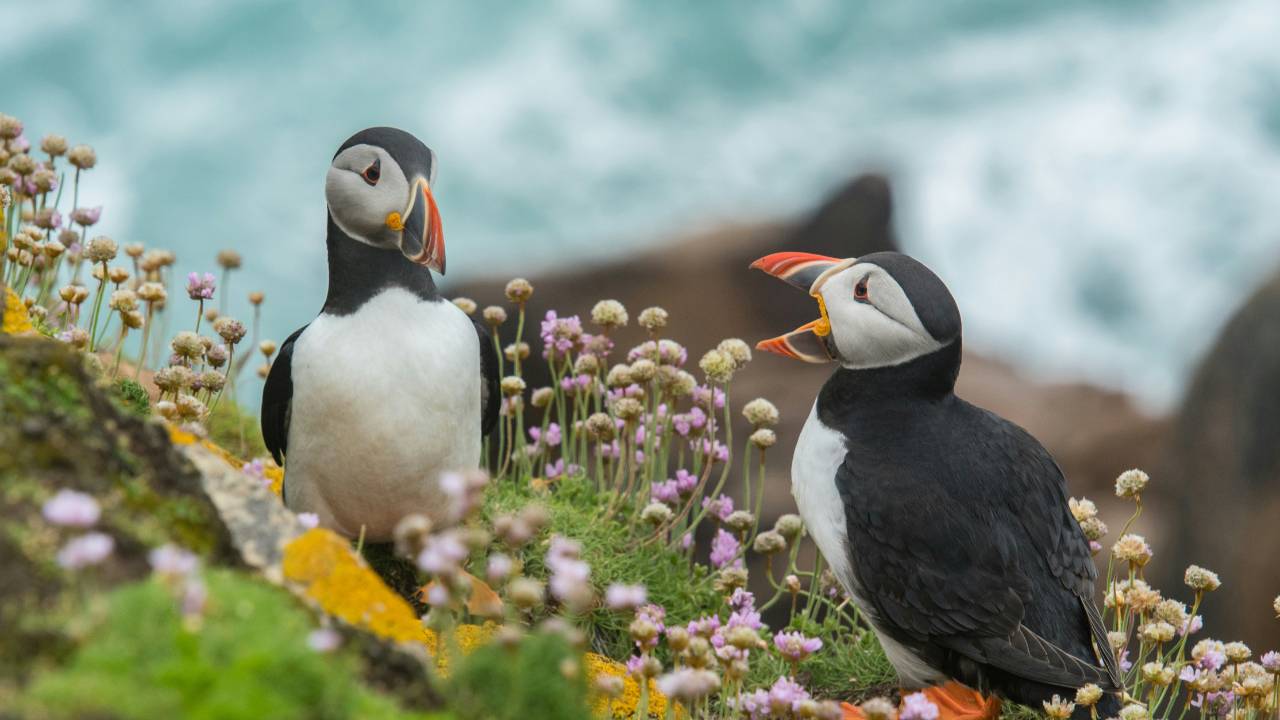
Iceland is home to one of the world’s most fascinating bird species, the puffin. Your puffin-watching adventure chiefly leads you to coastal areas where these birds nest in large colonies, often in burrows dug into cliff sides or grassy banks.
Westman Islands
Location: Vestmannaeyjar archipelago, South Coast of Iceland
- Known locally as Vestmannaeyjar, this cluster of islands boasts the largest puffin colony globally.
- Natural Habitat – Home to around 1.1 million puffins, you’ll find them residing in burrows across the landscape.
- Visit from May to August for the best viewing opportunities.
Látrabjarg Cliffs
Location: Westernmost point in Iceland
- Recognised as Europe’s longest bird cliff, Látrabjarg is a must-visit spot for puffin enthusiasts.
- Colonies – Puffins can be seen here from April until late July, mingling with countless other seabirds.
- The cliffs offer a sanctuary where puffins are unafraid of humans, allowing for close observation.
Tjornes Peninsula
Location: Northern Iceland, near Húsavík
- Fjords and Cliffs – This peninsula features undulating fjords and cliffs, forming ideal conditions for puffin habitation.
- Observation Tips – Visit during the peak seasons between April and August, and explore the coastline for the best sightings.
- Remember that puffins spend most of the day feeding at sea, returning to burrows at dusk.
Puffins’ Behaviour and Breeding
Puffins, with their distinctive beaks and breeding rituals, create a fascinating spectacle for any birdwatcher. Understanding puffins’ nesting and parental strategies, along with their feeding routines, is key to appreciating these seabirds’ lives.
Nesting and Rearing Young
Atlantic Puffins are known to mate for life, a charming trait that adds to your experience of observing their breeding habits. They favour rocky cliff sides and offshore islands, where they come ashore to breed and nest in burrows dug into the soil or among rocks. Their nesting period is typically from late April through August.
Each pair lays a single egg, and both parents share the duty of incubating it for around 39 to 45 days. After the chick, known as a puffling, hatches, you’ll notice both parents working tirelessly to feed it. It takes about 6 weeks for a puffling to grow strong enough to leave the burrow, during which you can observe the adult puffins’ devotion to their solitary offspring.
Feeding Habits
Your observation of puffins will likely be punctuated by sightings of these birds’ beaks loaded with fish. The diet of the Atlantic Puffin mainly consists of small fish, such as sand eels, herring, and capelin. They use their colourful beaks, the bright orange signalling the breeding season, to catch multiple fish at once, arranging them in a neat row.
Puffins plunge into the sea in a hunt for food, diving to depths of up to 60 metres. Their feeding excursions are essential not just for their own sustenance but also for feeding their growing pufflings. You might find them bobbing on the surface before they make quick dives beneath the waves, surfacing moments later with a beakful of fish.
While planning your wildlife tour, consider exploring the famous attractions of the Golden Circle and the serene beauty of Hvalfjörður. There are many things to do in Iceland that can complement your adventure, making your trip even more memorable.
For a truly immersive experience, consider combining your nature tour with our Luxury Iceland Experience or our Iceland Self-Driving tour, which allows you to explore at your own pace while enjoying the stunning landscapes.
Conservation Efforts
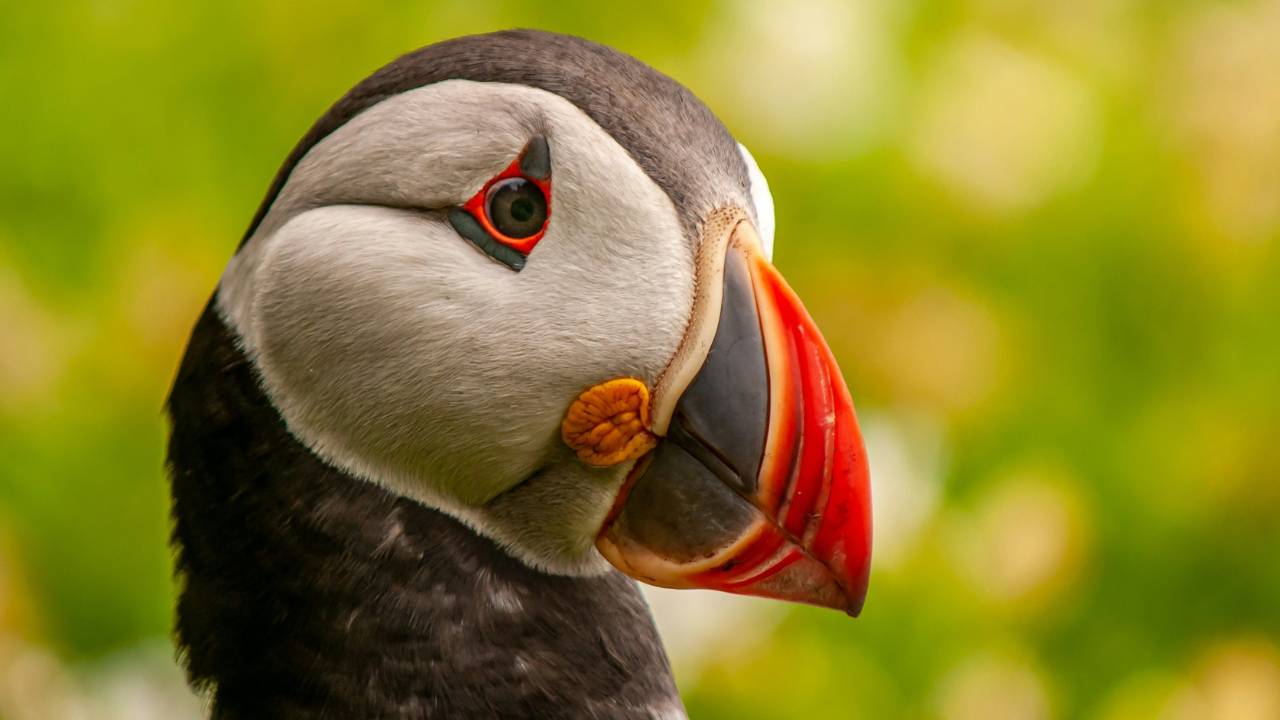
Puffin populations in Iceland face challenges, but targeted conservation efforts work towards protecting their unique habitats and ensuring that birdwatching is sustainable for future generations. You play a role in this mission.
Protecting Puffin Habitats
Protected natural reserves are crucial for puffin conservation. Your support helps maintain areas like the Westman Islands, where guidelines are strictly followed to safeguard puffin nesting sites.
Key Actions in Habitat Protection:
- Regulation Enforcement: Patrols monitor to prevent illegal egg collection and disturbance to nesting sites.
- Habitat Restoration: Efforts include reforestation and the careful management of invasive species that threaten the native vegetation puffins rely on.
Sustainable Tourism Practices
Your mindful visitation to puffin sites contributes to their conservation. By following prescribed paths and guidelines, you help minimise human impact on wildlife.
Recommendations for Tourists:
| Do’s | Don’ts |
| Stick to marked pathways. | Venture into restricted areas. |
| Use a birdwatching hide if available. | Approach or feed puffins. |
| Support local conservation groups. | Leave litter in the natural environment. |
By respecting these practices, your experience will not only be enriching but also supportive of the delicate balance between humans and Iceland’s birdlife.
Marine Life Beyond Puffins
Apart from the charming puffins, Iceland’s coast is a theatre for a dynamic marine life display featuring majestic whales and diverse seabird species.
Whale Watching Opportunities
You’ll find that Iceland offers some of the best whale watching experiences in the world. The waters around the island are a sanctuary for various whale species throughout the year.
- Commonly Spotted Whale Species:
- Humpback Whales: Known for their acrobatic leaps and complex songs.
- Minke Whales: The most frequently sighted whales in Icelandic waters.
- Blue Whales: The largest animals on earth, occasionally spotted in Skjálfandi Bay.
- Fin Whales: The second-largest species of whale, often seen in the North Atlantic.
Whale watching tours are available from several coastal towns including Reykjavik, Husavik, and Akureyri. Peak season is from April to October, with the highest chances to see whales in the summer months.
Other Seabirds and Marine Animals
Your adventure at sea might also introduce you to a variety of seabirds and other marine animals that call the Icelandic shores their home.
- Seabirds:
- Guillemots: Often observed in large colonies on cliff sides.
- Cormorants: Noticeable by their dark plumage and long necks, found near fishing areas.
- Marine Animals:
- Orcas: Also known as killer whales, they are powerful predators often seen in the Westfjords.
- White-Beaked Dolphins: Playful creatures frequently encountered during whale watching tours.
While the puffins may draw you to the shores of Iceland, the chance to witness the grandeur of whales and the rich tapestry of marine life will create unforgettable experiences. Don’t forget your camera for those spectacular sightings!
Cultural and Natural Landmarks
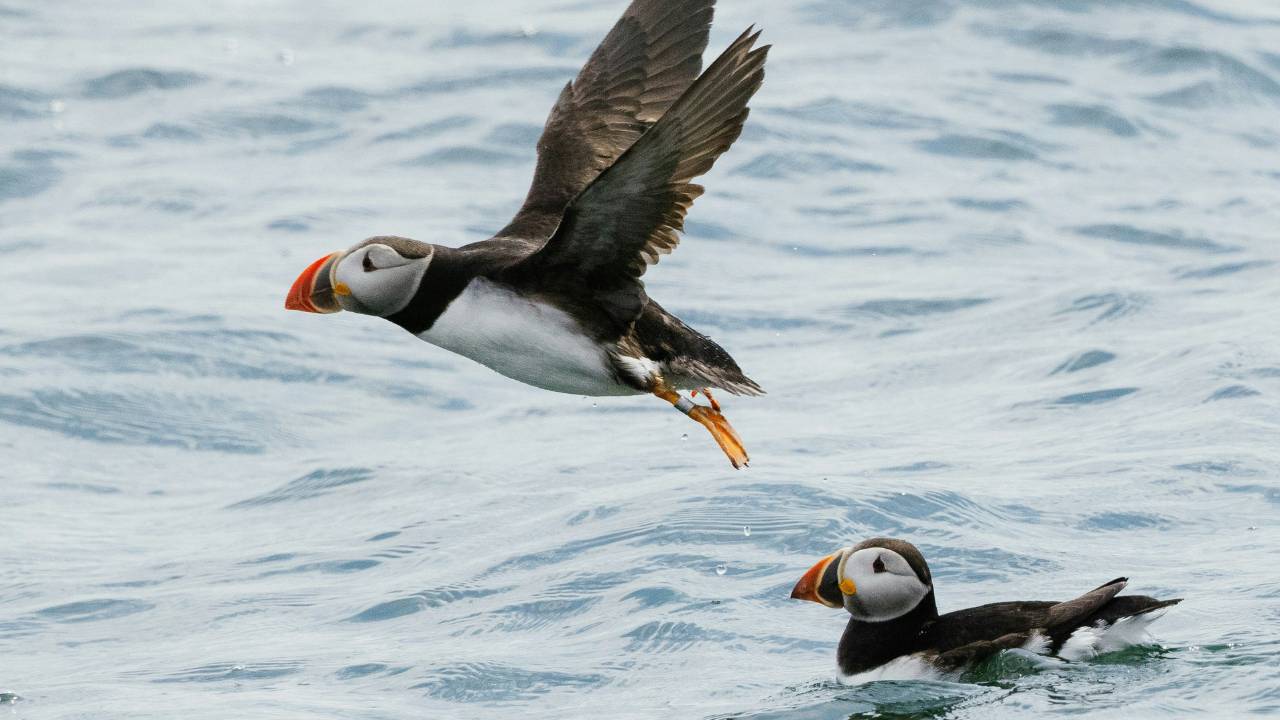
Iceland’s puffin-watching is an activity complemented by the country’s rich historical and geological tapestry. You’ll find sites that span from the human narrative etched into old structures to the raw, natural beauty sculpted by the forces of the earth.
Historical Sites
Westfjords: Situated in the northwest of Iceland, the Westfjords are remote and steeped in history. In this area, you’ll encounter Ösvör, an old fishing outpost preserved to showcase traditional Icelandic fishing methods. Additionally, the Westfjords are home to the Witchcraft and Sorcery Museum in Hólmavík, where you can learn about Iceland’s mystical past.
Reykjavik: The capital city is a hub for Icelandic culture with landmarks such as Harpa Concert Hall and the National Museum of Iceland, where you can immerse yourself in the deep roots of Iceland’s heritage.
Heimaey: This island is part of the Vestmannaeyjar archipelago off the south coast and is renowned for its history, including the 1973 eruption which led to the evacuation of its inhabitants. It’s a testament to the resilience of Icelandic people in the face of natural disasters.
Geological Formations
Ring Road (Route 1): Circling the entirety of Iceland, the Ring Road brings you close to a number of geological wonders. While travelling, keep your eyes peeled for unique rock formations and expansive glaciers.
Voladalstorfa & Reynisdrangar: Near the village of Vík í Mýrdal, you’ll find Voladalstorfa and the stunning basalt sea stacks of Reynisdrangar. These majestic formations are part of local folklore and are easily spotted during your puffin watching tours.
Hexagonal Basalt Columns: These intriguing natural structures are found at several sites in Iceland, such as the famous Svartifoss waterfall in Skaftafell.
Black Sand Beach: The striking Reynisfjara beach, notable for its black sand, is within close proximity to puffin habitats and is a must-visit for its sheer otherworldly appearance.
Mýrdalsjökull Glacier: Covering the volcanic Katla caldera, this glacier near Vík í Mýrdal offers spectacular views and a touch of the enormity of Iceland’s natural forces.
In your journey across this fascinating land for puffin watching, you are also exploring the historical milestones and geological marvels that make Iceland truly unique. Whether your interest lies in the tales of Vikings or the unyielding power of nature, these landmarks form a captivating backdrop to your avian adventure.
While planning your puffin watching tour, consider exploring the famous attractions of the Golden Circle and the serene beauty of Hvalfjörður. There are many things to do in Iceland that can complement your wildlife adventure, making your trip even more memorable.
Souvenirs and Memorabilia
When you visit Iceland for puffin watching, you’ll find a delightful range of souvenirs to commemorate your experience. Postcards featuring puffins in their natural habitat are a popular and easy-to-carry memento. You’ll find them at visitor centres and gift shops with stunning photographs to send or keep.
For something more lasting, consider purchasing handcrafted souvenirs. Icelandic artists create beautiful items inspired by the charm of puffins, from intricate jewellery to cosy woollen goods. If you prefer something practical, look for items like T-shirts and hats with adorable puffin prints or embroidered designs. They make for perfect gifts, or to wear yourself as a fond reminder of your trip.
Before you leave, don’t forget to pick up a puffin souvenir for your friends and family. Whether it’s a tasteful piece of handcrafted jewellery or a whimsical stuffed animal, these keepsakes are sure to bring a smile and a touch of Icelandic charm into your home.
